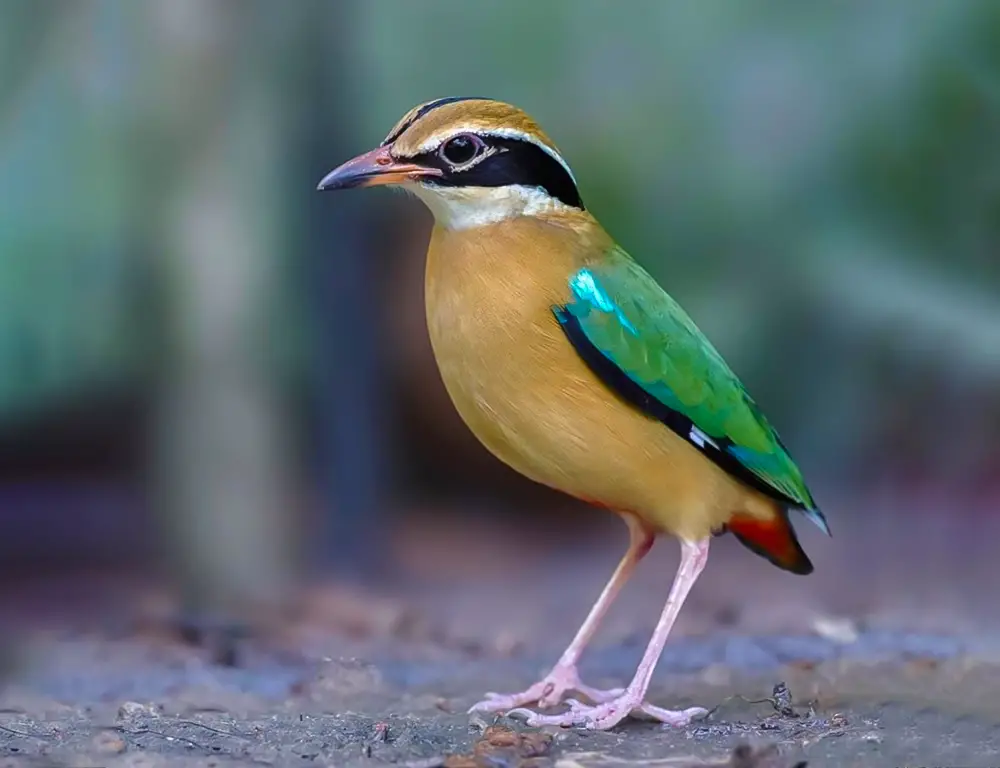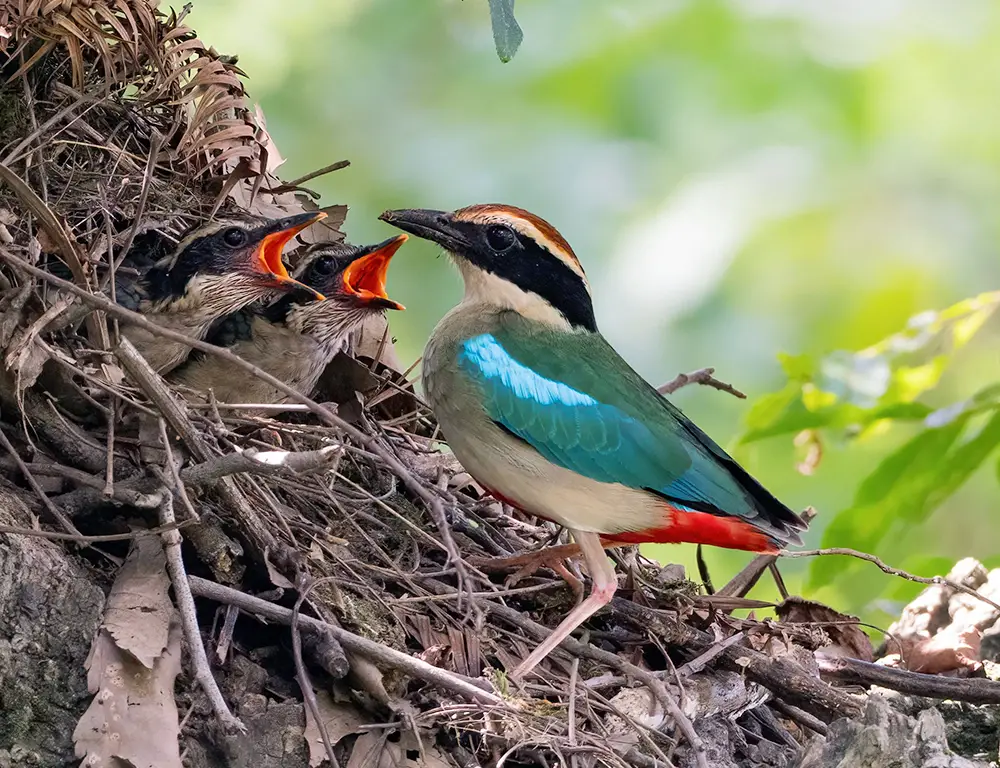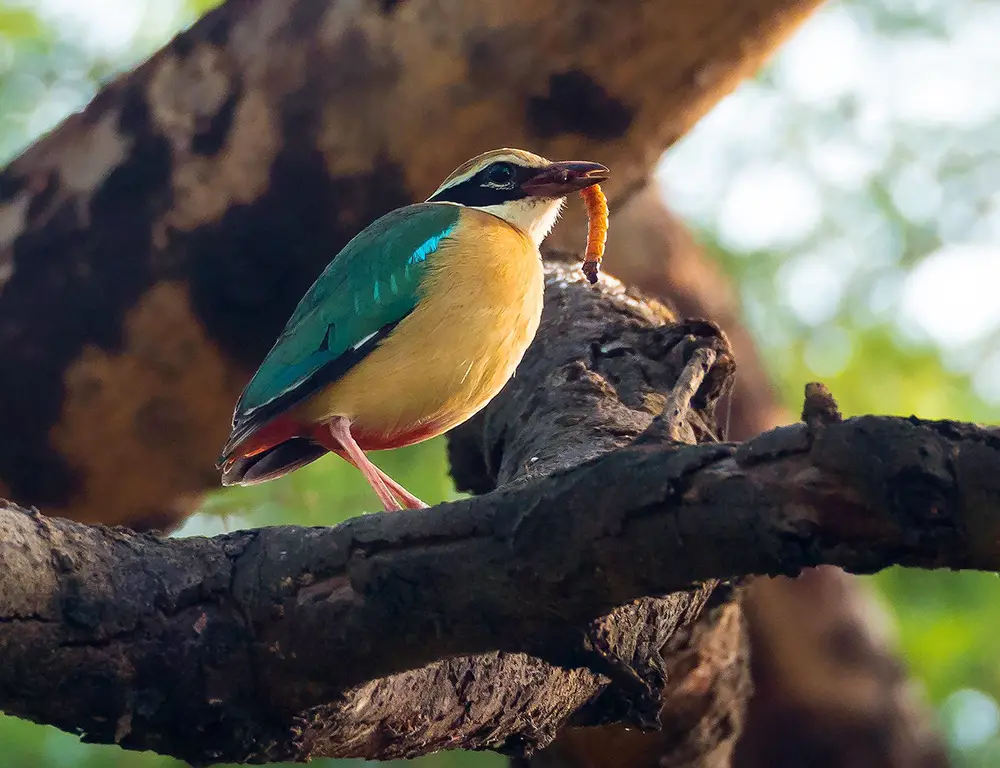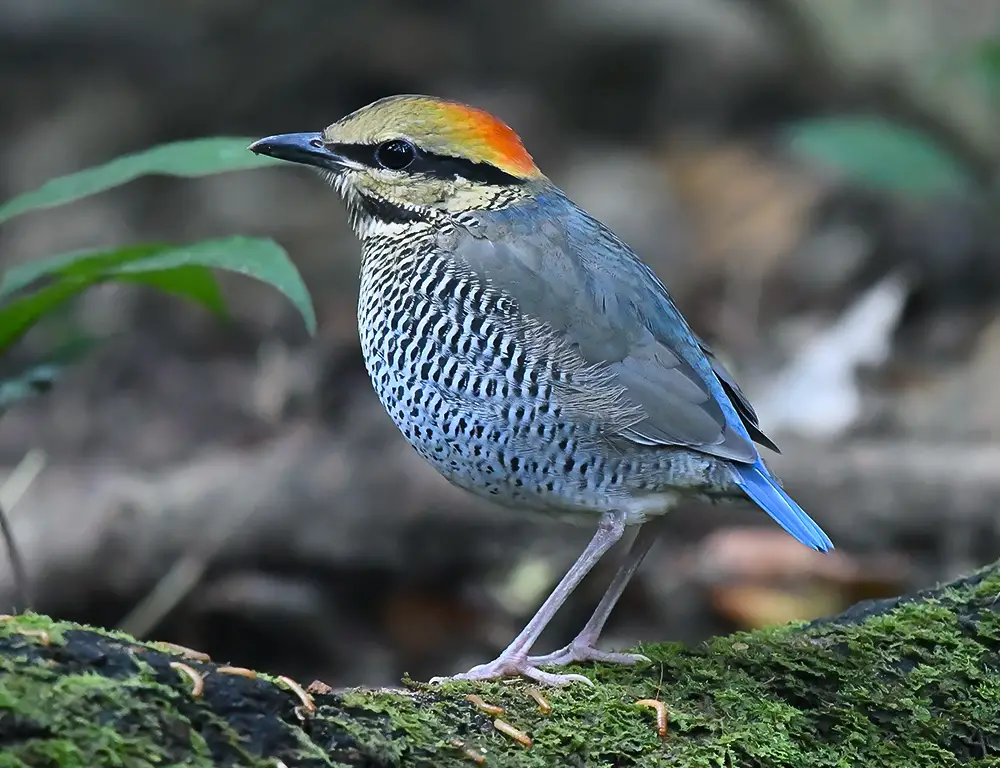The Pittas birds are a kaleidoscope of avian wonders that dazzle with their vibrant plumage and charismatic personalities.
Pittas, belonging to the family Pittidae, are renowned for their exquisite coloration, ranging from deep blues and vivid greens to fiery oranges and rich yellows, earning them the affectionate moniker “nature’s living rainbows.”
Found predominantly in tropical and subtropical regions of Asia, Africa, and Australia, Pittas birds inhabit dense forests, marshlands, and undergrowth, where their striking colors contrast against the verdant foliage.
Despite their small size, Pittas possess remarkable vocal abilities, with melodic calls that resonate through the forest canopy.
Join us to discover the enchanting world of Pittas birds, as we delve into their unique characteristics, behaviors, and ecological significance.
From their elaborate courtship displays to their role in seed dispersal and insect control, Pittas birds embody the vibrant spirit of tropical ecosystems, captivating birdwatchers and nature enthusiasts worldwide.

Key Identifying Characteristics of the Pittas Bird?
Pittas birds are renowned for their vibrant plumage and charismatic presence in tropical and subtropical forests.
These birds belong to the Pittidae family, comprising 40 species distributed across Asia, Africa, and Australia. While each species may exhibit unique characteristics, there are several key identifying features standard to most Pittas birds:
Vibrant Plumage
Pittas birds are renowned for their stunning plumage, which often features a kaleidoscope of colors.
From deep blues and vivid greens to fiery oranges and rich yellows, their vibrant feathers stand out against the lush greenery of their forest habitats. This colorful display has earned them the nickname “nature’s living rainbows.”
Medium Size
Pittas are typically medium-sized, ranging from about 15 to 25 centimeters (6 to 10 inches) in length. While they may vary slightly in size depending on the species, most Pittas birds have a compact, stocky build with short wings and a relatively long tail.
Round Head and Short Bill
Pittas birds have a distinctive appearance with a round head and a short, stout bill. Their bill is well-suited for capturing various prey, including insects, worms, and small invertebrates found in the forest floor’s leaf litter.
Large Eyes and Eyebrows
Pittas birds have large, expressive eyes that provide them with excellent vision, especially in the dimly lit undergrowth where they forage. Some species also have prominent eyebrows or markings around their eyes, adding to their distinctive facial features.
Cryptic Coloration
Despite their vibrant plumage, Pittas birds often exhibit cryptic coloration on their underparts, helping them blend into their forest environment and evade predators.
This combination of bright and muted colors effectively camouflages against the dappled light and shadows of the forest floor.
Secretive Behavior
Pittas birds are known for their secretive behavior, often remaining hidden in dense vegetation and only emerging briefly to forage or sing.
Their shy nature and elusive habits can make them challenging to observe in the wild, adding to their allure for birdwatchers and nature enthusiasts.
Distinctive Calls
Pittas birds are accomplished vocalists, with many species possessing a repertoire of melodic calls and songs. These calls vary widely between species and may include whistles, trills, and chattering notes used for communication, territory defense, and courtship displays.
Habitat Preference
Pittas birds inhabit various forested habitats, including tropical and subtropical rainforests, mangrove swamps, and bamboo thickets. They are often associated with dense undergrowth and leaf litter, where they forage for food and build their nests.
Territorial Behavior
Pittas birds are territorial during the breeding season, defending their nesting sites and foraging territories from intruders.
Some species engage in elaborate courtship displays, including aerial acrobatics and vocalizations, to attract mates and establish breeding pairs.
Nesting and Parental Care

Pittas birds typically construct cup-shaped nests on the ground or in low vegetation, where the female lays a clutch of eggs.
Both parents share incubation and chick-rearing duties, with the male often assisting in feeding and protecting the young until they fledge.
Taxonomic Level and Life History of the Pittas Bird
Understanding Pittas birds’ taxonomic classification and life history provides valuable insights into their ecology, behavior, and conservation needs, aiding efforts to protect these charismatic bird species and their habitats.
Taxonomy
| Taxonomy Level | Classification |
| Kingdom | Animalia |
| Phylum | Chordata |
| Class | Aves |
| Order | Passeriformes |
| Family | Pittidae |
| Genus | Varies by species |
| Species | Varies by species |
Range Map
The range map illustrates the distribution of Pittas birds across their habitat range, including tropical and subtropical forests in Asia, Africa, and Australia.
It highlights the areas where these birds are commonly found, providing valuable insight into their geographic distribution and ecological preferences.
Food Habits

Pittas birds are primarily insectivorous, feeding on various insects, spiders, worms, and other invertebrates found in the leaf litter and understory of forests.
They use their sharp bills to probe and capture prey, often employing a sit-and-wait strategy to ambush unsuspecting insects.
Nesting
| Nesting Habit | Description |
| Nest Location | Ground or low vegetation |
| Nest Composition | Cup-shaped nest made of leaves, moss, and twigs |
| Clutch Size | Typically contains 2-5 eggs |
| Incubation Period | Around 14-20 days |
| Parental Care | Both males and females share incubation and care |
Breeding
Pittas birds typically breed during the wet season when food availability is high. They construct cup-shaped nests on the ground or in low vegetation, where the female lays eggs.
Both parents share incubation and chick-rearing duties, with the male often assisting in feeding and protecting the young until they fledge.
Conservation Status
Many species of Pittas birds are considered vulnerable or threatened due to habitat loss, deforestation, and illegal capture of the pet trade.
Conservation efforts focus on protecting their forest habitats, implementing sustainable logging practices, and raising awareness about the importance of preserving these birds and their ecosystems.
Diseases and Treatments
Pittas birds may be susceptible to various avian diseases, including respiratory infections, parasitic infestations, and injuries. Treatment typically involves veterinary care, including antibiotics, antiparasitic medications, and supportive therapy to aid in recovery.
7 Fun Facts About the Pittas Bird

Delve into the fascinating world of Pittas birds with these intriguing insights:
1. Colorful Plumage
Pittas birds are renowned for their vibrant plumage, which features a dazzling array of colors, including deep blues, vivid greens, fiery oranges, and rich yellows. Their striking appearance has earned them the nickname “jewels of the forest.”
2. Elusive Nature
Despite their vibrant colors, Pittas birds are often elusive and difficult to spot in the dense undergrowth of tropical forests. Their shy and secretive behavior adds to their allure for birdwatchers and nature enthusiasts.
3. Melodious Calls
Pittas birds are accomplished vocalists, with many species possessing a repertoire of musical calls and songs. Their calls vary widely between species and may include whistles, trills, and chattering notes used for communication and territory defense.
4. Ground Nesters
Pittas birds construct cup-shaped nests on the ground or in low vegetation, using leaves, moss, and twigs to build their nests. This nesting behavior makes them vulnerable to predation and habitat disturbance.
5. Monogamous Pairs
During the breeding season, Pittas birds form monogamous pairs and establish territories where they construct nests and raise their young together. Both parents share incubation and chick-rearing duties until the young fledge from the nest.
6. Insectivorous Diet
Pittas birds are primarily insectivorous, feeding on various insects, spiders, worms, and other invertebrates found in forest leaf litter and understory. They use their sharp bills to probe and capture prey with precision.
7. Migratory Behavior
Some species of Pittas birds are migratory, undertaking long-distance journeys between breeding and wintering grounds. Changes in food availability and habitat conditions often trigger these migratory movements.
FAQs
What is a Pitta bird?
Pittas are small to medium-sized passerine birds found in tropical and subtropical forests of Asia, Africa, and Australia. They are known for their vibrant plumage and elusive nature.
What do Pittas birds eat?
Pittas birds are primarily insectivorous, feeding on various insects, spiders, worms, and other invertebrates found in forest leaf litter and understory. They use their sharp bills to probe and capture prey with precision.
Where do Pittas birds live?
Pittas birds inhabit dense tropical and subtropical forests, including rainforests, mangrove swamps, and bamboo thickets. They are often associated with areas with thick undergrowth and leaf litter, where they forage for food and build their nests.
Are Pittas birds migratory?
Some species of Pittas birds are migratory, undertaking long-distance movements between breeding and wintering grounds. Changes in food availability and habitat conditions often trigger these migrations.
Are Pittas birds endangered?
Many species of Pittas birds are considered vulnerable or threatened due to habitat loss, deforestation, and illegal capture of the pet trade. Conservation efforts focus on protecting their forest habitats and raising awareness about preserving these birds and their ecosystems.
Conclusion
Pittas birds are emblematic symbols of the dazzling diversity in tropical ecosystems. Their vibrant plumage and melodious calls illuminate the dense foliage of forests and marshlands, enchanting observers with their beauty and charm.
Beyond their aesthetic appeal, Pittas play crucial ecological roles as seed dispersers and insect controllers, contributing to the balance and resilience of their habitats.
As guardians of these biodiverse regions, we must continue prioritizing the conservation of Pittas birds and their habitats.
By preserving the pristine environments where they thrive and implementing sustainable practices, we can ensure the continued survival of these captivating avian species for future generations to appreciate and admire.
Let us unite to protect Pittas birds and the rich tapestry of life these beautiful birds represent, safeguarding the natural heritage of our planet’s tropical realms. Let’s protect the avians together!